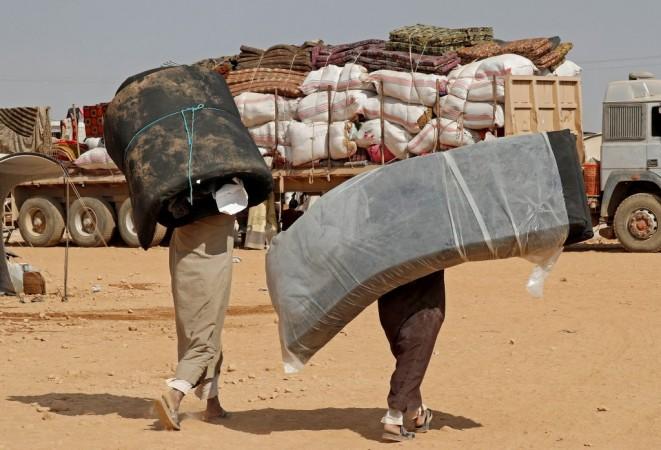When thinking about solving the world's hunger problem it's very unlikely to consider mattresses as part of the solution. But, scientists at the University of Sheffield UK have come up with a solution in which mattresses, indeed, can be used in growing crops and fruits in any conditions.
The discovery
Tony Ryan, a Chemistry Professor from the University of Sheffield, was once visiting a landfill when he noticed a tomato plant growing on a discarded sofa. That led him to believe that the plant can grow on foams.
This realisation that foam can be used to grow plants, tony got a PhD student, Harry Wright, to focus on the use of polyurethane foams to grow high-value crops for food production. Meanwhile, he and his team visited a Zaatari refugee camp in Jordan- the world's largest camp for people displaced by the Syrian Civil War- to help displaced people develop useful products out of waste materials.

Life as a refugee:
Life as a refugee is tough. They are the people moved out of their country and are living in a foreign land with no long-term settlement. Tough regulations do not allow them to apply for jobs, build any stable residence, fix their home, or plant anything into the ground.
In this case, in Zaatari refugee camp, where the resources at disposal are very limited, becoming self-reliant is a long shot. While many of those refugees are farmers, doctors, engineers and technicians, they depend on international aid for sustenance.
In addition, the scorching heat makes the matter more difficult for the camp occupants. The summer temperature there reach around 37 degree Celsius.
So, when Professor Tony visited the Zaatari refugee camp in the height of the summer, he was relieved to be invited out of glaring sun and into a comparatively cool camp's warehouse.
Ah-ha moment:
The warehouse in which Professor tony was taken to was full of stacked discarded mattresses. Looking at it, it clicked to Tony that these discarded mattresses could be potential solution for tackling food shortage at the camp. "The wo things just came together," he said. The mattresses could be repurposed as a growing medium for plants.
But where did these mattresses came from in the first place? To answer that, those were provided by the UN refugee Agency to their aid workers. However, once the mattresses have been used, they can't be reused by someone else, but they can be repurposed.
How it works?
In the normal agricultural process, soil supports the plant's roots and provide all the nutrients. Whereas in a hydroponic system, foam holds the plant upright and all other functions of the soil come from the nutrients in the water.
In the hydroponic system, only 20% of the water used in growing something in the ground is used. It is because the water isn't going anywhere and is kept, where it's needed, explains Tony.
Dessert Garden:
Tony believed hydroponic system as the winning solution for the people in Zaatari refugee camp. The soil condition, small area, heap of discarded mattresses and disposable containers could all be used in growing food for the inhabitants.
Working with the people in the camp, Tony realised that the idea to use mattresses for growing food had the potential to give farmers the opportunity to apply their years of experience and skills to meaningful purpose and at the same time produce food to eat and sell.
So, After the idea was introduced and the refugees were trained in the basic principles the project took in a life of its own.
Till now, more than 200 refugees have been trained to use mattresses foam as an alternative to soil and grow plants. They already have an area the size of tennis court covered in the new system.
Feeding the world:
The success of growing plants in the middle of the dessert with some foam from discarded mattresses has proven the potential to provide food in any conditions.
It is no wonder that in coming years with little more research and technology we can provide food to people in a more local and sustainable way.
Seconding this, Tony said,
"If you can make it work here, you can make it anywhere."
Across the plant there are 2 billion people who are chronically hungry. In India alone, 194.4 or 14.5 percent of the total population is undernourished, according to FAO's 2019 report.
With the world population set to grow to 10 billion by 2050, we need innovative solutions like these to feed the growing population.

















